Palm Beach State College turns 90 years old. Here's a look at its history decade by decade
Palm Beach State College celebrates its 90th anniversary in November, marking decades of growth, challenges and plans for the future.
Launched by Joe Youngblood and Howell L. Watkins during the Great Depression, the college offered students a local, affordable option to pursue higher education during a time when jobs and money were scarce.
The college has evolved with each passing decade, and its footprint has expanded throughout the county.
Here's how Palm Beach State College grew from a small building in downtown West Palm Beach to five campuses, tens of thousands of students and more than 130 programs of study.
1930s: Florida’s first public community college opens in Palm Beach County
Originally known as Palm Beach Junior College, it opened on Nov. 14, 1933, welcoming 41 students and becoming Florida's first two-year public college. The original building is located near the corner of Fern Street and Gardenia Street in West Palm Beach, on what is now the campus for Dreyfoos School of the Arts.
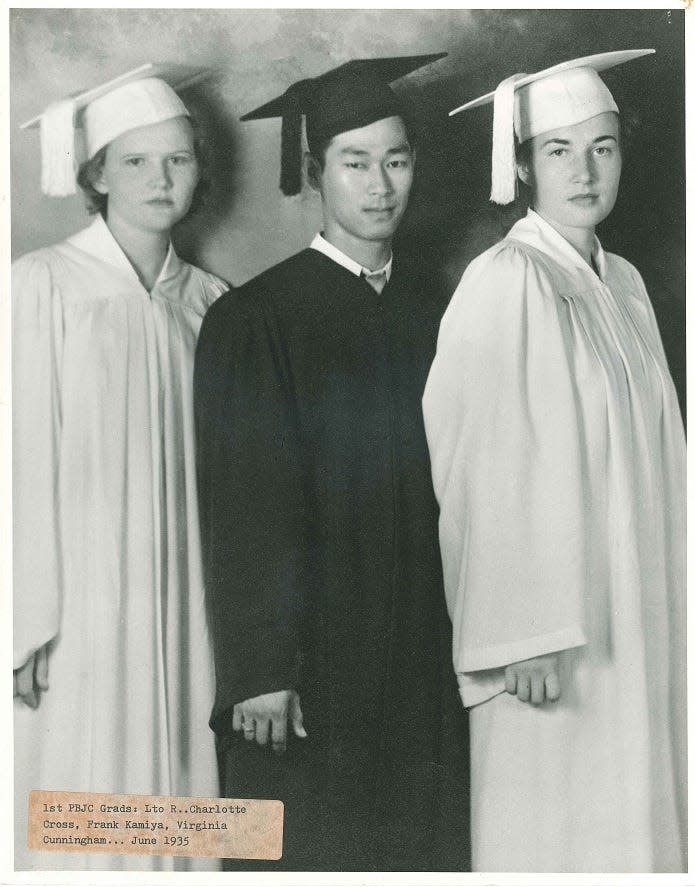
Charlotte Cross, Virginia Cunningham and Frank Kamiya became the college’s first graduates in June 1936.
1940s: With eyes on a former military base, the college made its first move amid growing enrollment
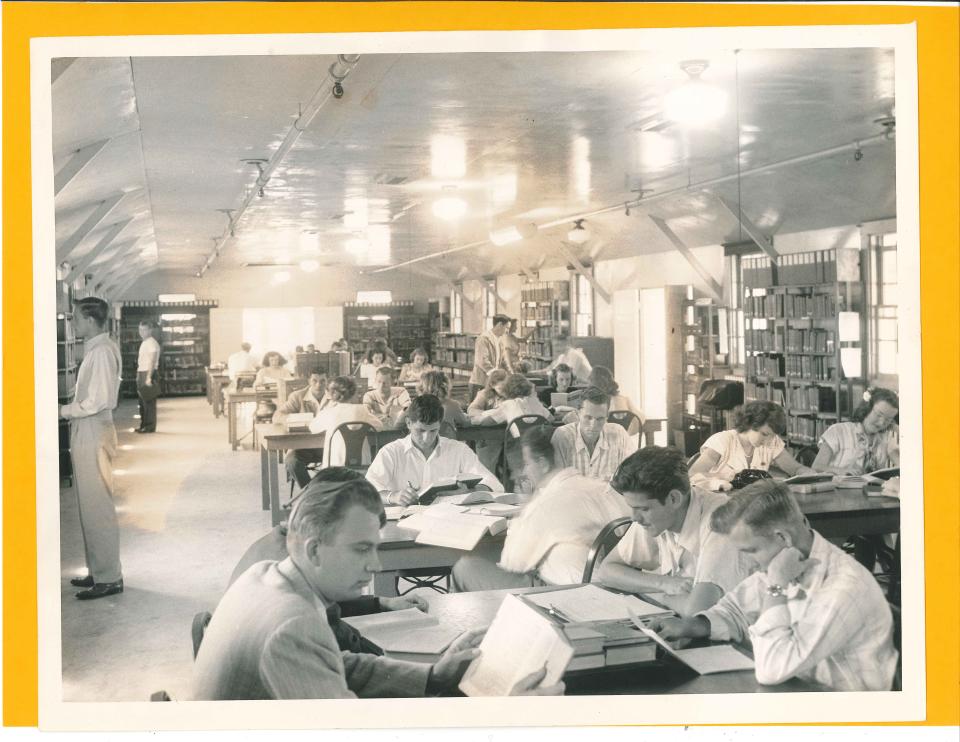
That same year, John I. Leonard, superintendent of Palm Beach County Schools, became the college’s first president, earning the nickname “Mr. Junior College" for his work over the years.
Enrollment hit triple digits for the first time with 117 students attending the college in the 1939-1940 school year.
By 1948, as enrollment continued to climb, the college outgrew its original home and moved into the buildings at Morrison Field. Deactivated after World War II, the former military base sat on a 21-acre site now used by Palm Beach International Airport.
An airplane hangar became the college library, and the Officer's Club became a student union building. But just a few years later the military base was reactivated during the Korean War, forcing the college to move once more.
1950s: Former town hall becomes college's new home
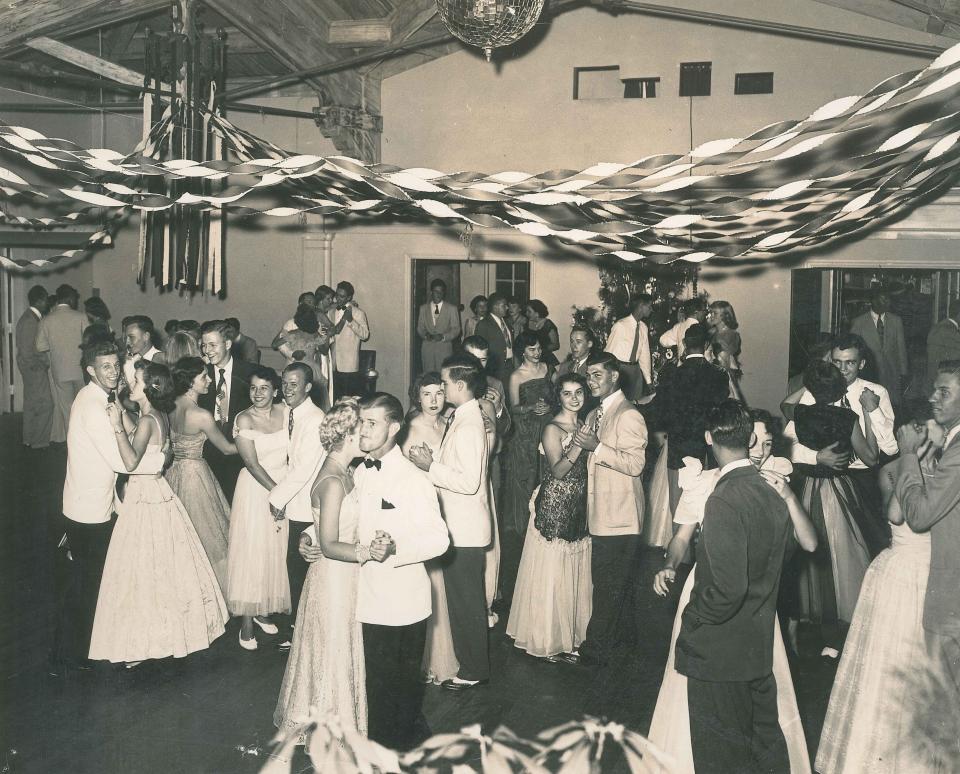
The college moved into the former Lake Park Town Hall building by 1951, limiting enrollment and cutting staff to continue operations in the cramped building. The former jail became a chemistry lab, the courtroom evolved into a library and a room that once stored fire engines became a lounge for students.
Their fortune changed in 1955 when the county commission donated 114 acres of land in what was then Lake Worth to the college, which used the land — along with more than a million dollars in state funding — to build the first permanent campus in 1956.
And in 1958, Dr. Harold C. Manor became the college's second president, overseeing huge growth as enrollment surpassed 1,000 students for the first time.
1960s: Civil rights movement changed the landscape of local community college
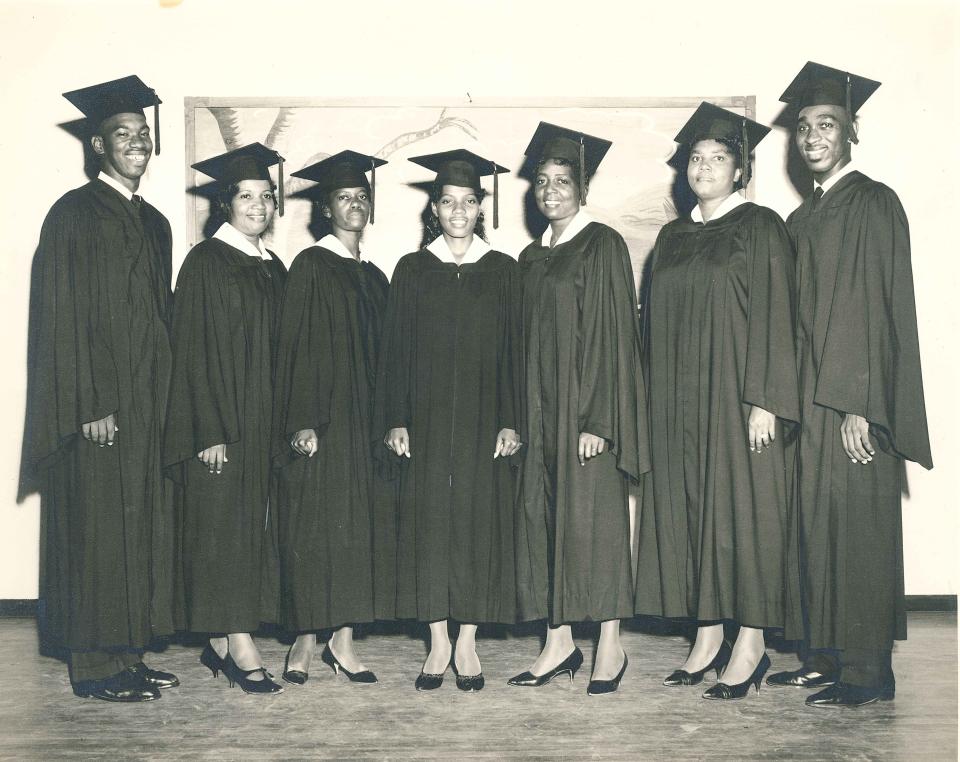
Almost all of the 2,000 students attending PBJC in the early '60s were white. The first Black student, Mary Warren, enrolled in 1960.
The Palm Beach County School Board governed the college at that time. In 1963, several families sued the school board for denying a request by students to transfer from the all-Black Roosevelt Junior College to PBJC, which offered better courses.
The school board voted to remove enrollment barriers at PBJC and attendance grew to more than 3,500 as students transferred from Roosevelt Junior College. The two colleges then merged in 1965, after the U.S. Senate approved the Civil Rights Act.
Then, in early 1968, the state passed a law that changed the governance of junior colleges from local school boards to independent boards of trustees.
1970s: A new campus is born in Belle Glade
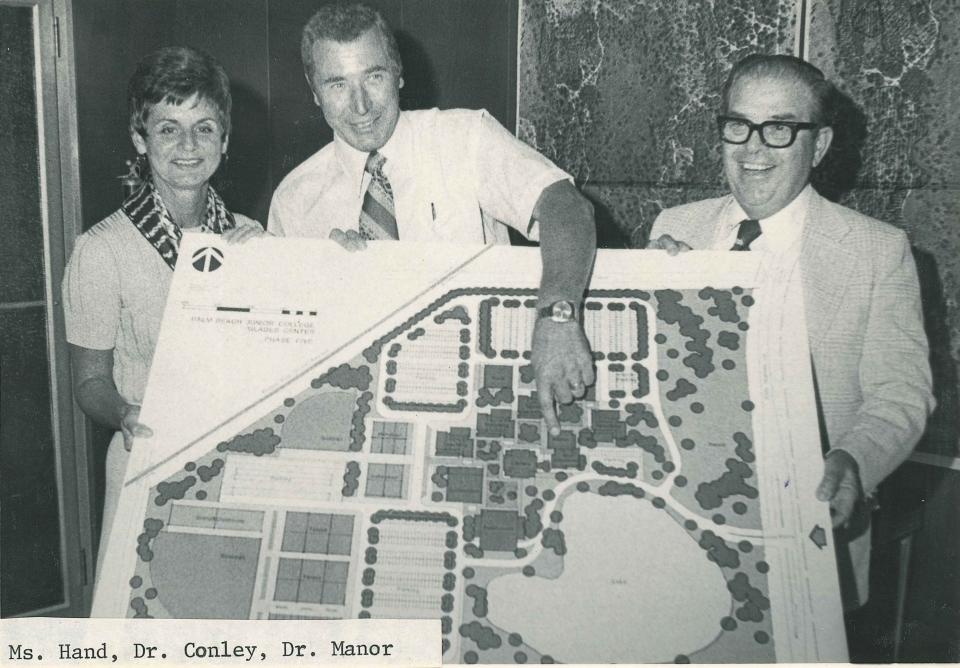
The college, hoping to expand throughout Palm Beach County, began holding classes at temporary locations in Belle Glade starting in 1972. The Belle Glade National Armory was renovated and turned into classroom space, while Glades General Hospital held the college's administrative offices.
The college broke ground on a permanent Belle Glade facility in 1977 before holding an open-house ceremony on Feb. 12, 1978.
That same year, Dr. Edward M. Eissey became the third president of PBJC.
1980s: PBJC has another name change and new campuses in Palm Beach County
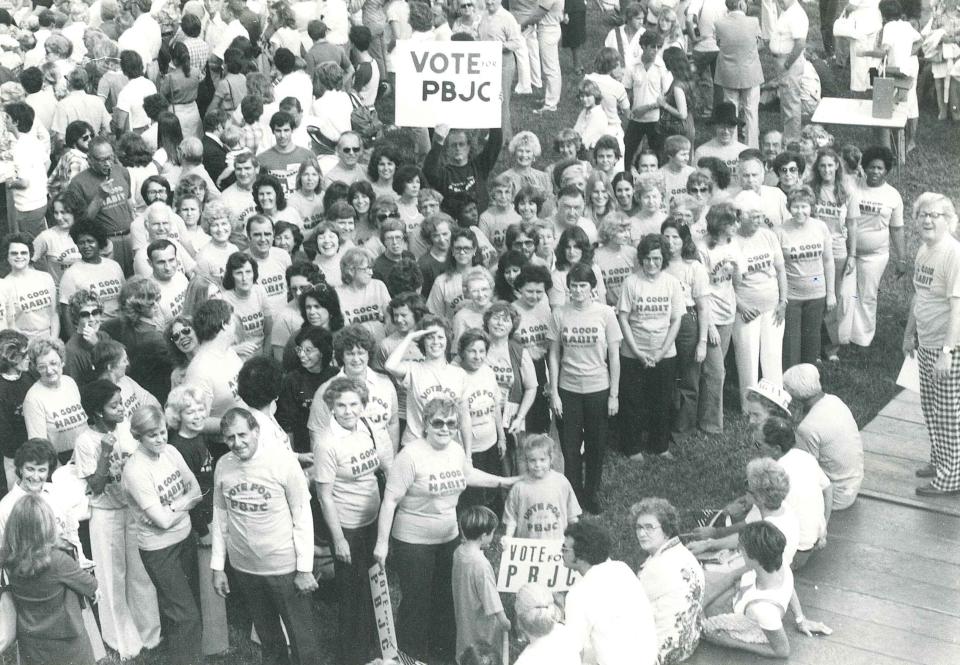
Eissey led the charge to secure more funding and to bring the college into a new era of growth. The campaign for a half-mill property tax increase began with a news conference in January 1980, and the college president went on to give dozens of speeches throughout the county.
About two months later, as voters went to the polls, college students and staff lined highway overpasses and busy intersections to push for the referendum's approval. "Vote for PBJC, Punch 139," their signs read.
The referendum, which was meant to pay for much-needed improvements at the college's aging facilities, passed with 9,701 votes in favor of the tax and 5,104 against.
Years later, with help from an increase in state funding, the college opened its Palm Beach Gardens location in 1982. The college then opened its Boca Raton campus in 1983, along with the Dolly Hand Cultural Arts Center in Belle Glade.
In 1988, after decades of PBJC continually offering more local programs and services, the Board of Trustees decided to change the institution's name to Palm Beach Community College, or PBCC.
The college also exceeded 10,000 students for the first time during the '80s.
1990s: A new mascot and changes to the Palm Beach Gardens campus
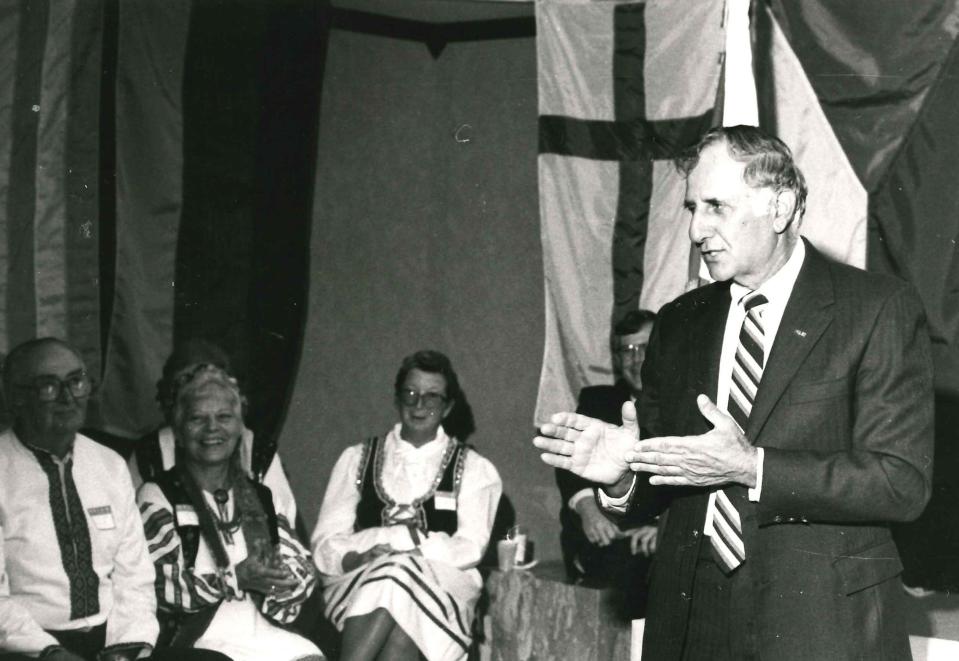
On Sept. 14, 1990, PBCC renamed the Palm Beach Gardens campus to the Edward M. Eissey Campus, honoring his years of service to the college. The Eissey Campus Theatre opened there years later.
In 1991, the Board of Trustees changed the college's mascot to a Florida panther — a beloved mascot now known as Palmer the Panther. The "Pacers," PBCC's previous mascot, was a type of racing horse.
In 1993, by the college's 60th anniversary, enrollment was nearing 50,000 students across four campuses.
In 1997, Dennis P. Gallon became PBCC’s fourth president. And in 1999, the college assumed responsibility for more than 40 postsecondary adult vocational programs from the Palm Beach County School District.
2000-2010: The college name we know today
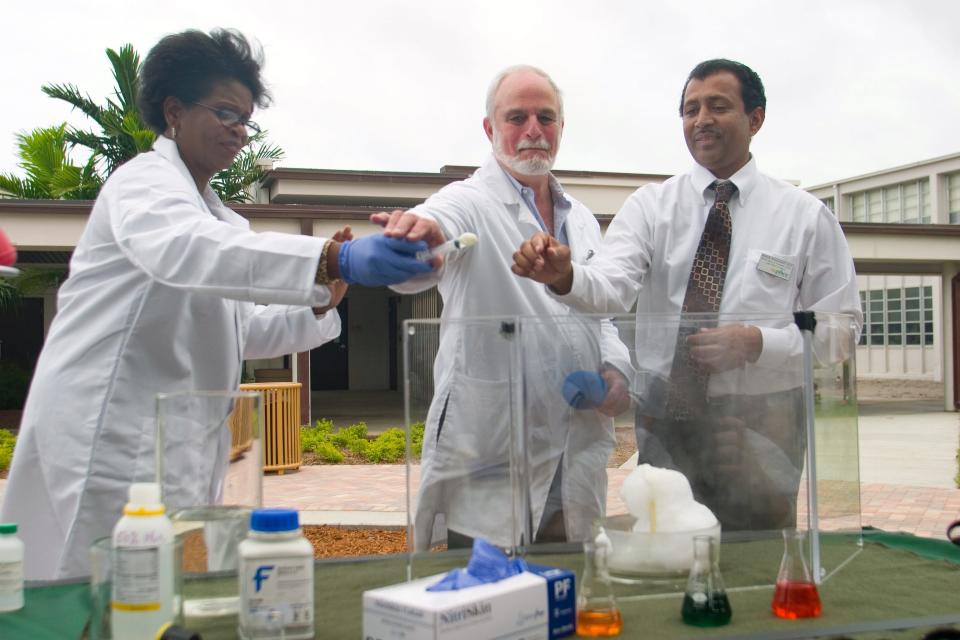
In 2008, the State Board of Education gave PBCC the green light to offer its first baccalaureate degree: a Bachelor of Applied Science in Supervision and Management.
That same year, the Lake Worth campus opened its Natural Science building, expanding classroom and laboratory space. The college's Technical Education Center opened on the Belle Glade campus in 2010.
Also in 2010, PBCC officially adopted its new name: Palm Beach State College. The change reflected PBSC's ability to offer four-year degrees.
2011-2021: New degrees, facilities and support for students at PBSC
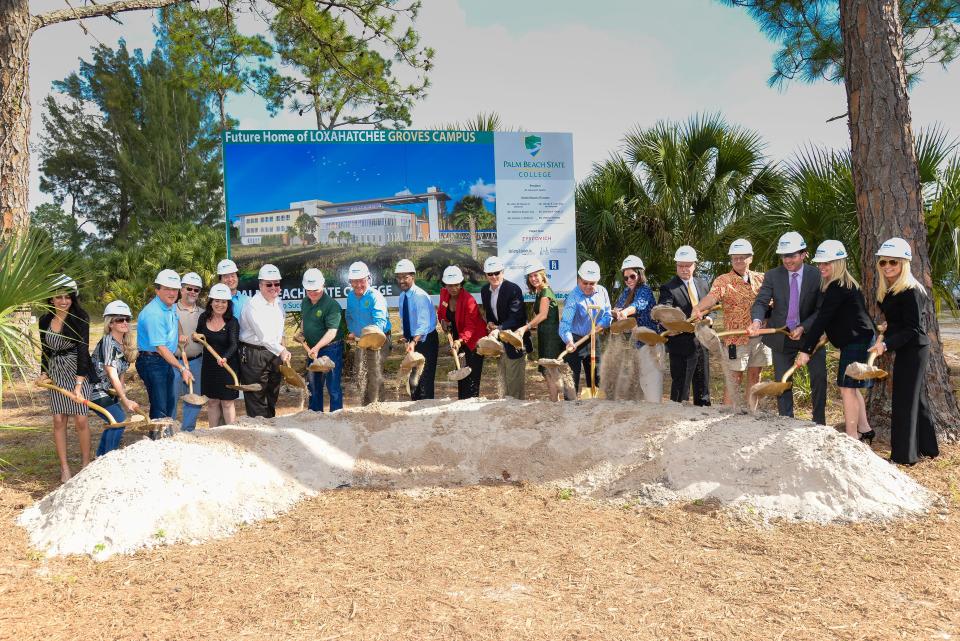
The college awarded its first bachelor's degrees to 122 students in 2011.
Not long after, in 2013, the college opened its 143,000-square-foot Public Safety Training Center on the Lake Worth campus, offering an education in the areas of criminal justice, firefighting and emergency medical services.
The college broke ground on its Loxahatchee Groves location — the fifth PBSC campus — in 2014, and Ava L. Parker became the first woman to head Palm Beach State College as its president in 2015.
That same year, the college opened its first Panther’s Pantry to help students who struggle with food insecurity, followed by the first Panther's Closet, a thrift store with $1 clothes and shoes, about two years later.
The Loxahatchee Groves location officially opened in 2017. Named after the college's former president, the Dennis P. Gallon campus started with a focus on innovative technology and health science programs.
The college then offered its first fully online Associate in Arts degree program in business in 2018. That same year, PBSC opened the Veterans Success Center on the Lake Worth campus, helping veterans and service members with their education.
In 2020, the college started offering two new bachelor’s degree programs in human services and respiratory therapy, and PBSC opened the Dr. Barbara Carey-Shuler Equity Institute to "improve retention and help close the graduation gap for minority students."
2022 to current day
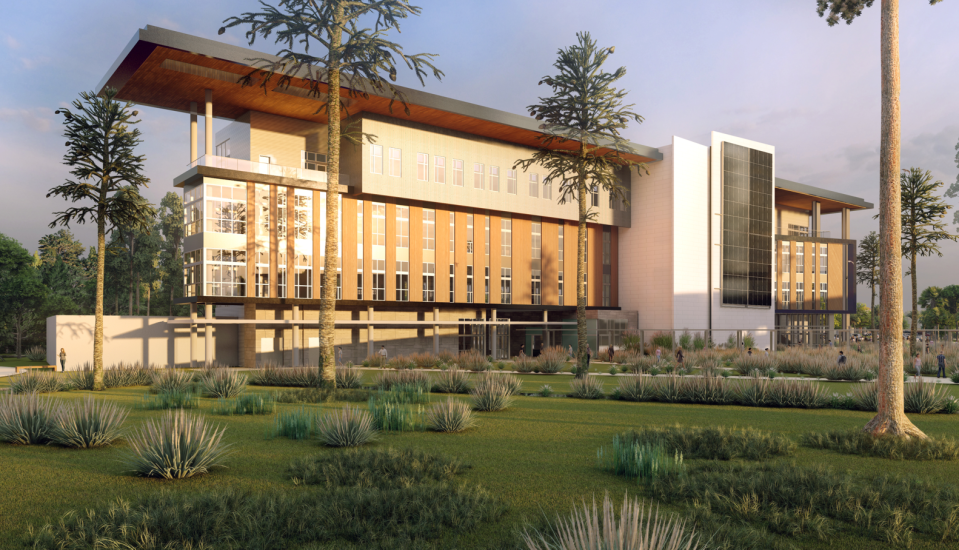
Palm Beach State College now serves more than 40,000 students a year, offering associate and baccalaureate degrees, along with professional certificates, career training and continuing education.
Last year, the college launched PBSC Online, a fully online program that offers students the option to pursue degrees and certificates on their own schedules.
This year, the PBSC women's beach volleyball team made history after winning the inaugural NJCAA Beach Volleyball National Championship.
TMRW Sports Group, co-founded by Tiger Woods and Rory McIlroy, broke ground on an interactive, indoor tech golf league at PBSC’s Palm Beach Gardens campus in February.
PBSC also broke ground at the Loxahatchee Groves campus in May, kicking off the construction of a $50 million Dental and Medical Services Technology building. The facility is expected to have a dental clinic, a surgical technology suite and science labs, offering training to students and low-cost dental services to community members.
Construction of the four-story, 83,500-square-foot building is expected to finish in 2025.
"1933 to 2023 was an amazing 90 years but what is coming up is going to be spectacular," President Parker said.
Giuseppe Sabella is a reporter covering Boynton Beach and Lake Worth Beach at The Palm Beach Post, part of the USA TODAY Florida Network. You can reach him at gsabella@pbpost.com. Help support our journalism and subscribe today
This article originally appeared on Palm Beach Post: PBSC reflects on decades of history during 90th anniversary

